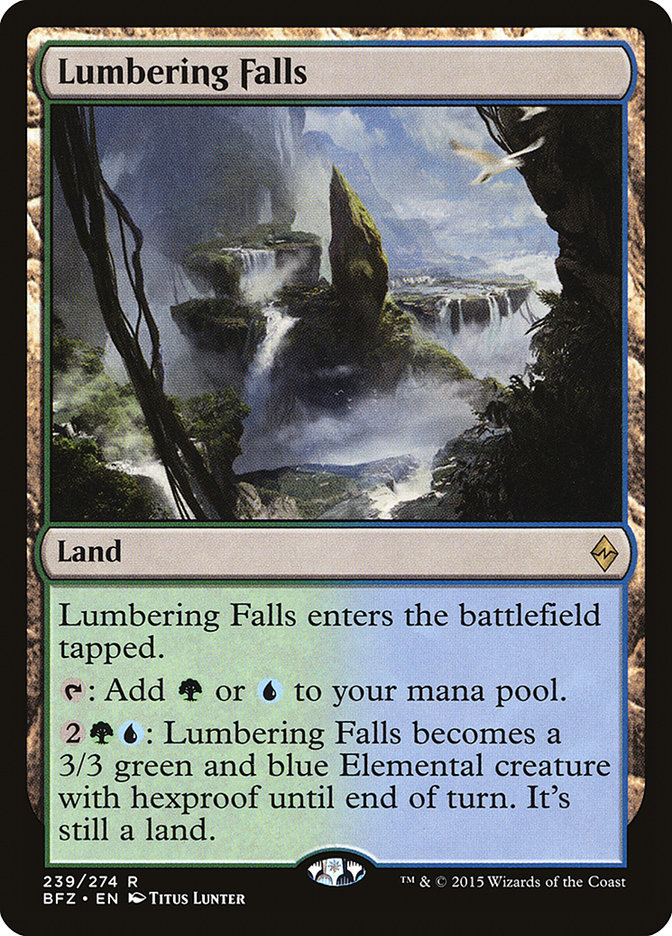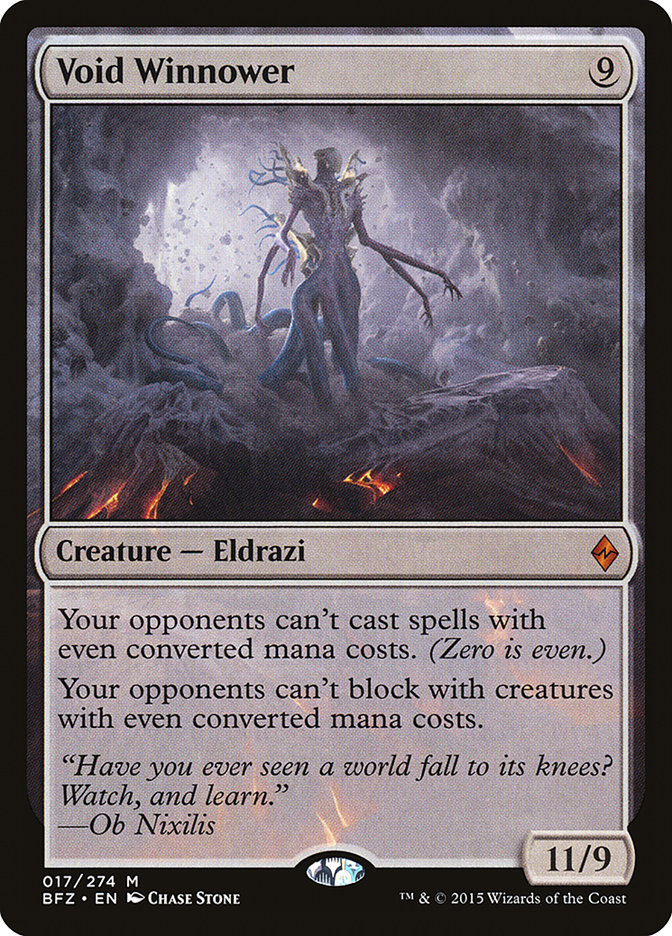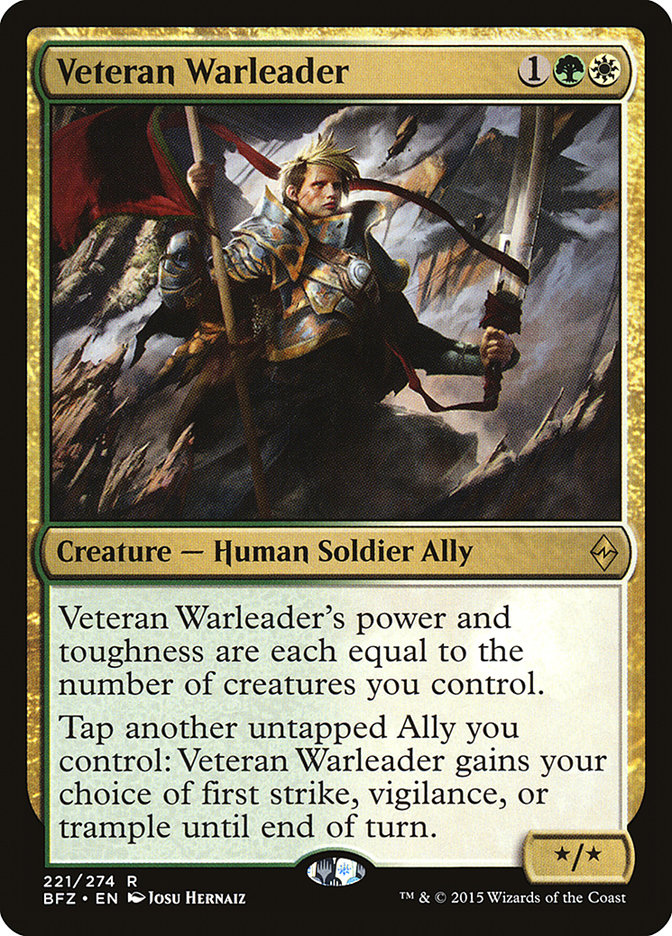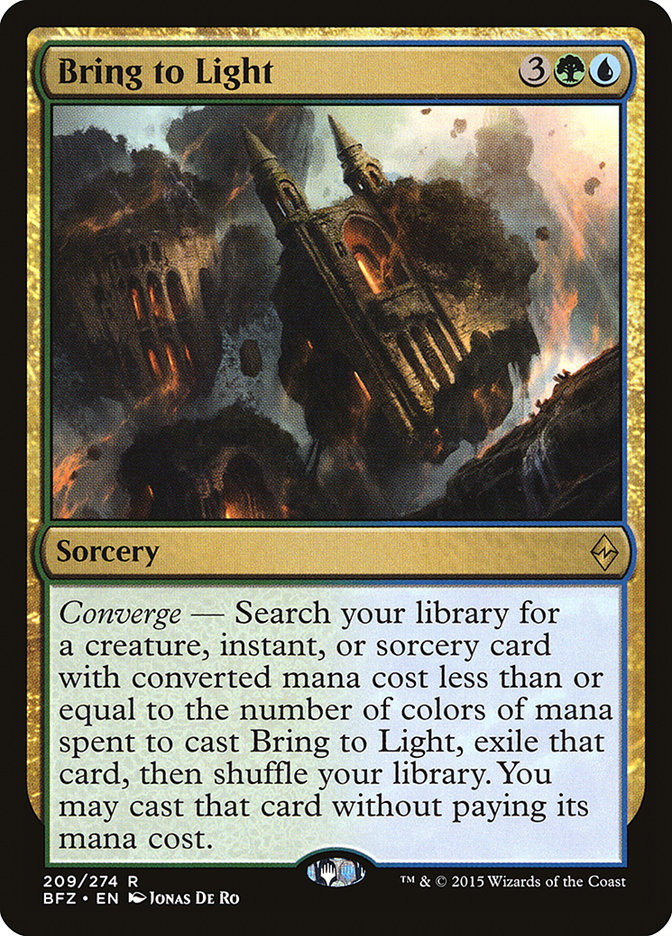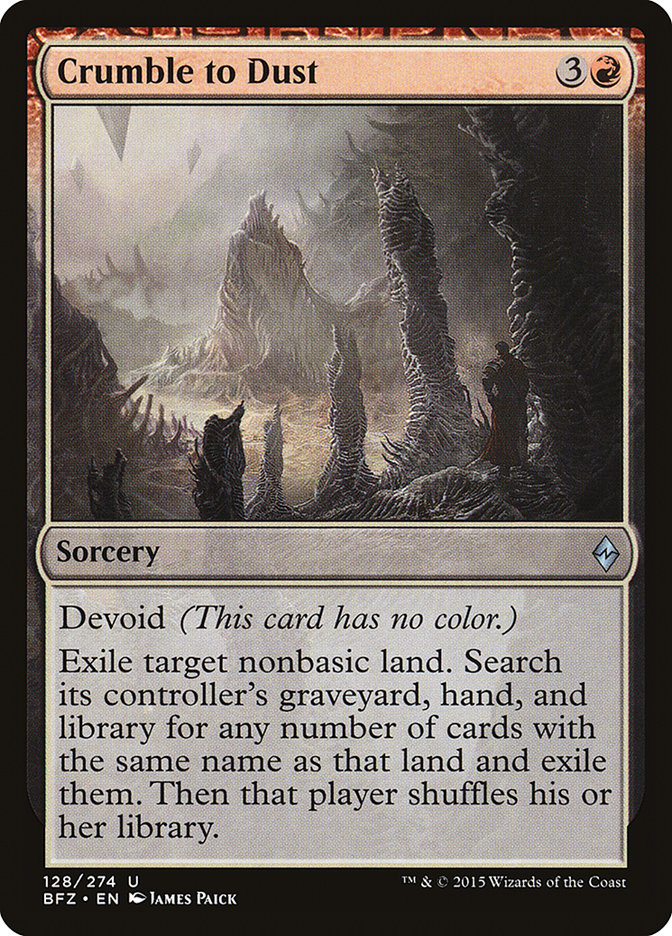It seems to be a trend lately.
Every set that comes out, I tell myself: “This is the most exciting set I’ve ever seen!” It’s not hard for me to get excited, mind you, but Battle for Zendikar has so much going on, it’s hard for me to find something I don’t like.
We all know that Battle for Zendikar is going to shake up Standard, even if the actual power level of the individual cards winds up not being what
we expected. The sheer amount of format staples that are parting ways with us is massive, so we’re forced to adapt and adjust accordingly. Last week, I touched on what cards from Khans of Tarkir
and Magic Origins would potentially have a chance to shine. Now that we have the full spoiler available to us, there are a lot of important
factors that need to be (re)iterated, as these are changes incredibly drastic and will completely change the landscape of how we know Standard Magic. Not
having Elvish Mystic or Lightning Strike is going to be hard to get used to, even if two mana accelerants and Draconic Roar exist. Those are super
conditional, and they demand your deck be built a very certain way. It’ll be interesting to see if those proxies will even be worth playing as we begin
dipping our feet into what we think the format will look like.
Today, I want to head straight into Modern. As I do every new set, I look at the cards I think will make an impact across all of Magic’s major competitive
formats. This time, I want to do things a bit differently and focus on one format at a time.
In Modern, everything is compact, robust, and either hits hard, kills things efficiently, or has built-in two-for-ones. The demand for introducing new
cards into Modern is arguably higher than it is for Legacy when things are scaled to the relative average converted mana cost of cards. What I mean is, the
cheaper the spell gets, the more we have to consider its Legacy application. Of course, there are exceptions to this, but those are directly contextual to
whatever is enabling it (think Emrakul in context to Show and Tell). Essentially, the bar for introducing new cards into Modern is much higher than Legacy
because the average converted mana cost of the overall format is almost twice as much, among many other factors. Because of this, we have a lot of
considerations for Modern and what could impact it.
Scapeshift is one of those decks where I can’t ever figure out how people do well with it. That’s mostly because I always question how decks that don’t do
anything forever do well. That’s not a slight against the deck as much as it is a lack of understanding on my part, but I may be more inclined to explore
the deck more now that Lumbering Falls is an option. This is the better of the two creature-lands for Modern, mostly because black and white is almost
always paired with green unless you’re B/W Tokens, and Abzan decks already have access to Stirring Wildwood. There’s always been flex spots in the lands
for Scapeshift in general, sometimes Temples, sometimes Halimar Depths. Now, this is my leading candidate to fill that void.
This is one of the better cards that G/R Tron has access to out of the sideboard. Being able to halt Splinter Twin, various removal spells, Primeval Titan,
Hive Mind, and even G/R Tron mirror matches, only allowing Karn Liberated to be an out to a two-turn clock. Void Winnower is one of those cards that
doesn’t seem like something you’d be interested in playing but wind up sideboarding it in against way more matchups than you thought. In fairness, it’s a
very difficult card to evaluate, mostly because you’d have to take a look at each and every even converted mana cost card, then decide if those cards
warrant the spot in your sideboard (or maybe maindeck!). Preliminarily, I’d say yes, but it’s easily worth a closer look if you G/R Tron players are in the
market.
Let’s Talk About Allies
Ari Lax continues to praise Allies as a legitimate archetype in Modern, and it’s hard for me to not believe him.
Creatures (26)
- 1 Mirror Entity
- 4 Kabira Evangel
- 4 Kazandu Blademaster
- 4 Oran-Rief Survivalist
- 4 Akoum Battlesinger
- 4 Hada Freeblade
- 4 Champion of the Parish
- 1 Abzan Falconer
Lands (22)
Spells (12)

The power of this deck is most definitely stemmed from the synergy, and Collected Company is the ultimate boost when it comes to decks that want synergy. Battle for Zendikar gives this deck a huge push. Kor Bladewhirl is a solid inclusion if you’re looking to win in combat, as first strike is a
solid way to set the pace. Firemantle Mage is going to be a ridiculous headache as well, and will probably define offensive-oriented builds. Munda, Ambush
Leader conflicts with Collected Company, but I don’t see why they can’t coexist, especially when Aether Vial is part of the equation. Having a Ringleader
effect is absurdly powerful, but the difference between this and Sylvan Messenger in Modern is that each of your Allies further boosts your offensive
capability. Elves doesn’t make as good of use out of their Ringleader effect because they’re only digging for more synergy and almost no straight up power.
Here, you just might die if they grab a Mirror Entity, Kabria Evangel, or Firemantle Mage, especially when it’s off of an Aether Vial at instant speed.
Being legendary is a bit of a drawback, as you can’t chain them together as you would similar tribal creatures with the same effect, but it may also be a
blessing in disguise, as it greatly alleviates the inevitable “How many should I play?” dilemma. The body is reasonable, 3/4, and having haste is a nice
touch too, even further promoting attacking.
Veteran Warleader feels really powerful. It’s another addition to a long line of “creatures you control”-reliant creatures. It can easily adapt to most
combat situations due to your choice of three very potent offensive abilities that can be activated at instant speed, as well as multiple at a time. It can
be put onto the battlefield off of Collected Company, and it’s easy to cast on its own. The big question I have for this card is “Do I even need it?” Yes,
it’s obviously powerful for what it does, but it may not even be completely necessary. While it being reliant on any creature you control, not just Allies,
means that cards like Champion of the Parish still play very nicely with it, and while I’m not necessarily skeptical about its viability, I’m still
cautious about it, as there may be even better things to do in those spots.
Resolute Blademaster might just be that card, believe it or not. Double strike is an overpowered ability, and thus, it has always been relegated to very
expensive or hard to condition cards, and for good reason. A lot of Allies aren’t terribly large, however, so deciding to go to the larger creature route
is probably where you want to be if you want to make use of this pseudo Craterhoof/Overrun effect. This makes the Champion of the Parish, Veteran Warleader
combo an easy shoe in, but the best planeswalker in Battle for Zendikar for Modern can easily be considered as well.
In the Allies deck, Gideon is such a powerful inclusion, mostly due to just how many options it gives to a deck that, while very synergistic, isn’t flush
with many actual choices. Making 2/2 Allies triggers all of your rally abilities. Glorious Anthem is a huge boost in a deck that kind of has small
creatures to begin with, and sometimes you just need a huge creature to attack with and put the clock on. I don’t think this is the most important piece to
the Allies puzzle (which goes to Veteran Warleader), but Gideon may complete the trifecta of this archetype.
The last question about Allies is if it’s worth splashing a fourth color. Zulaport Cutthroat is decent but doesn’t really wow me. Kalastria Healer pairs
well with it though, and it is pretty strong when everything else is operating normally. Lastly, there’s Drana, Liberator of Malakir. While a very powerful
card in its own right, I don’t think it’s as powerful as Veteran Warleader. Double black hurts it as well, and while Lightning Bolt isn’t the biggest
reason not to play it, it certainly doesn’t help. The trigger doesn’t happen unless it connects, and I want to be able to get them dead without waiting a
turn.
That’s a lot of Ally talk, I know, but I certainly think that that deck is the clear winner out of all Modern decks. There is one card I want to keep a
close eye on though.
I don’t know where, I don’t know when, and I don’t know how, but I have a really bad feeling about this card. There’s something that can be broken, and
when it does happen, it’s going to be a problem. Granted, the card doesn’t seem like it does a lot. You’re essentially daisy chaining a spell with Bring to
Light being the “middleman.” Channel the Suns is the first thing that comes to mind, but what can we do after that? I’ll leave that up to you!
This is my pick for best card in the set for Modern in a vacuum. Sowing Salt was already a staple sideboard card against G/R Tron and Scapeshift, but
having it cost one less red and not being countered by Flashfreeze–a counterspell that Scapeshift will sometimes play out of the sideboard to combat red
decks–is a very large improvement. We will see this card be the go-to hate spell for those decks from now on.
As you can see, there are a surprising amount of cards that are definitely worth considering in Modern, and a number that will give significant boosts to
existing archetypes. What cards do you think will be worth playing in Modern?

